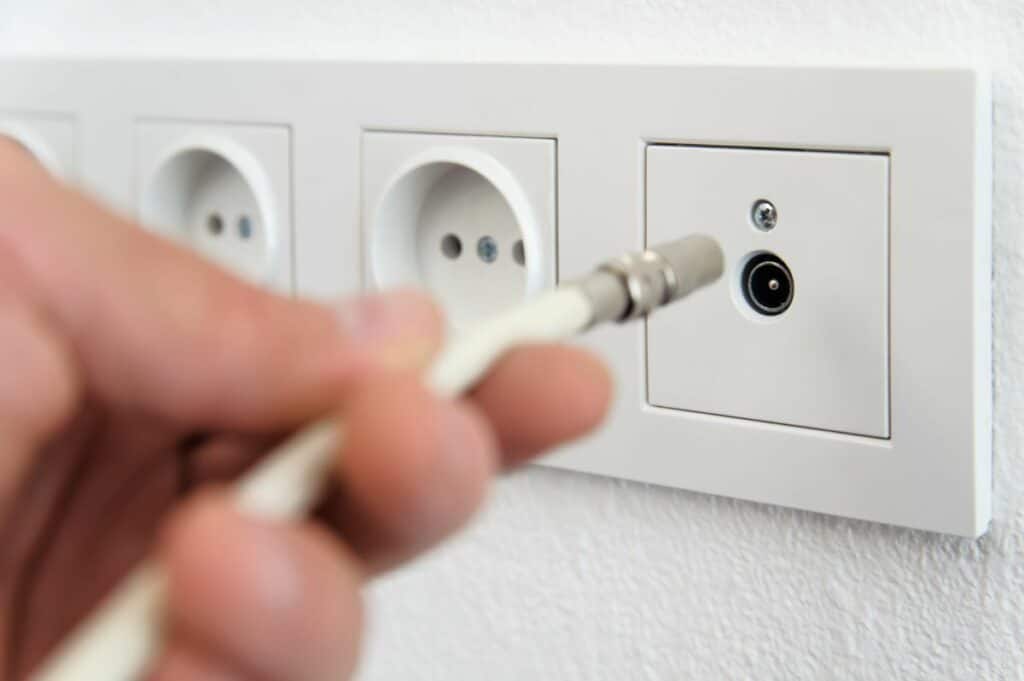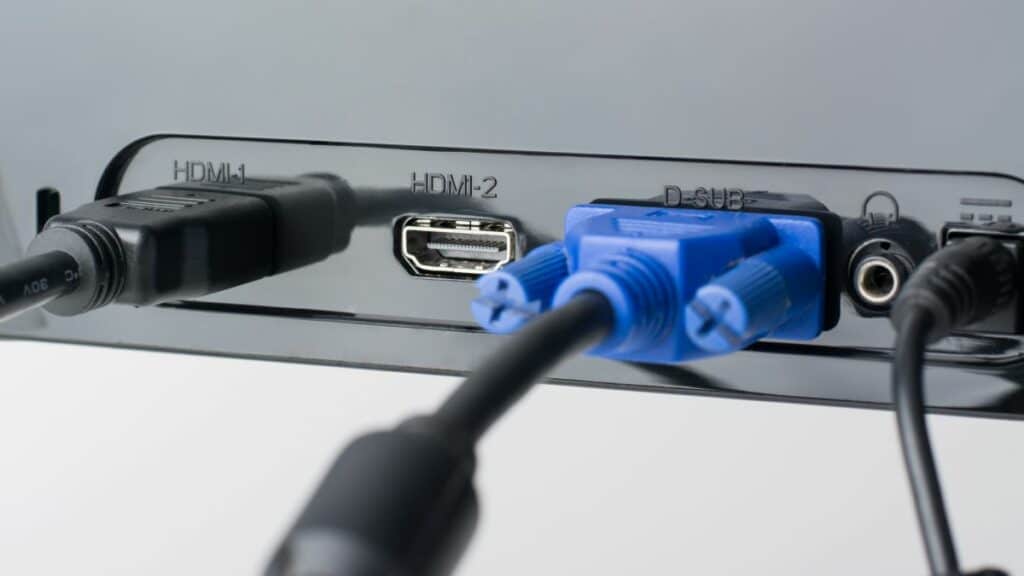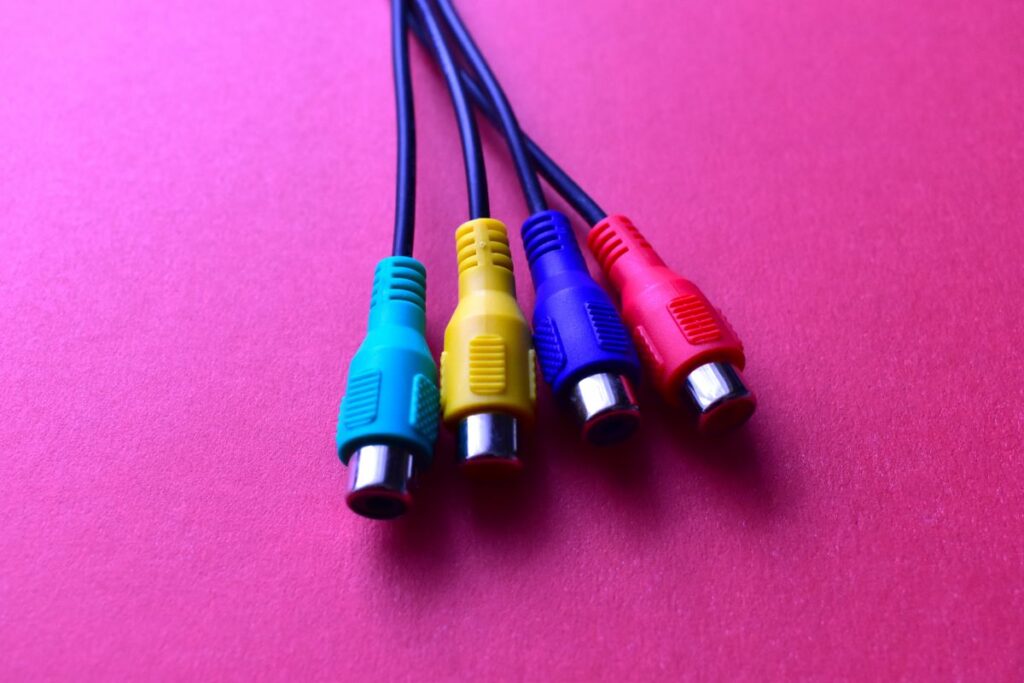the essentials in brief
Antenna cables differ in their characteristics shielding, their diameter and the quality of their materials.
For cable TV you need a coaxial cable. More on this…
Which cable television is best depends on individual requirements and regional offerings. The right TV cable for your needs…
If its about TV cable differences many people quickly feel overwhelmed. They all kind of look the same, right? But beware! Each cable has its own purpose and can have a significant impact on your viewing experience. In this post you will learn all about the different cable types and how to get the most out of your TV.
Contents
The classic: the antenna cable (coaxial cable)

The antenna cable, also called coaxial cable, is a familiar companion in the living room for many of us. Originally developed to transmit radio frequency signals, it has evolved over the years as a Standard for satellite and cable reception established.
The transmission quality of the coaxial cable is usually stable and reliable. It is highly dependent on the physical integrity of the cable. This means that damage, e.g. B. by kinking or wear, can lead to signal interference. Therefore, it is always important to be careful when laying the cable and to check the condition of the cable regularly.
As for the connections, so are F connector particularly typical for satellite reception, while IEC plug mainly for DVB-T and cable connections be used. These connectors are designed to ensure a secure and trouble-free connection between the cable and the receiving device.
A particularly important aspect when choosing a good coaxial cable is the shielding value. A high shielding value protects this Signal from external interference such as other electronic devices or strong electrical fields. Therefore, when buying a new cable, you should always pay attention to good shielding.
Did you know?
The very first TV cable was used back in the 1920s when the first television sets were developed. It was a far cry from the high-tech cables we know today, yet it had a crucial impact on how we consume media. It's amazing to think that such a simple invention would lay the foundation for the multimedia revolution that followed!
SCART: The nostalgic choice
The SCARTCables, once an indispensable part of all home electronics, bring back nostalgic memories for many of us. The big, chunky plug and the many pens represented a time in which home electronics celebrated its breakthrough and TV, DVD-Player and VCR connected to each other were.
The advantage of the SCART cable was that it simultaneously transmitted audio and video signals, which made it a practical solution for those who preferred a clean and tidy setup without clutter. With good quality, a SCART cable could deliver a surprisingly clear and vivid picture, which was especially appreciated when playing DVDs or videocassettes.
However, SCART also has its limitations. It is unable to transmit high definition (HD) signals, which means it's less relevant in this day and age where 4K and even 8K are becoming more common. The physical size of the SCART connector and its limited transmission quality has meant that it is rarely found in modern televisions and other devices.
Yet there is a loyal community of retro enthusiasts and collectorswho appreciate the aesthetics and feel of yesteryear. For them, SCART is still the Connection of choice, especially when it comes to getting vintage equipment like old game consoles or video players up and running.
Note: Despite its declining popularity, SCART reminds us how quickly technology moves and that what is considered standard today may be obsolete tomorrow. It is a symbol of a bygone era when the marriage of technology and entertainment was still in its infancy.
VGA: Not just for the computer
VGA is known as a PC standard, but is also used in some televisions.
- Type: Analog cable originally designed to connect computers to monitors.
- picture quality: While VGA offers acceptable picture quality for older devices, it can't be compared with today's digital standards, such as HDMI, don't keep up.
- Resolution: Usually supports maximum 1080p, but lower resolutions such as 800 × 600 or 1024 × 768 are often used.
- send email now: Consists of 15 pins in three rows. The end of the cable is often blue and requires two small screws to be tightened to secure it.
- Incredible Ton: VGA only transmits video signals. A separate connection is required for audio.
- Adapter: Since modern devices often no longer offer a VGA port, there are adapters that convert VGA to HDMI or other formats.
- Applications: In addition to PCs, also for projectors in schools or offices, and sometimes for older televisions.
- Lifespan: Despite decreasing usage, VGA continues to hold its own in certain areas thanks to its robustness and reliability.
HDMI: The all-rounder

In the modern world of consumer electronics has HDMI as the dominant standard for audio and video transmission established. HDMI stands for "High definition Multimedia Interface" and enables crystal-clear digital transmission of video and audio signals over a single, thin cable. This makes it popular with home theater enthusiasts as well as the average consumer.
The great thing about HDMI is that it can transmit a variety of information, including high-definition video and multi-channel audio, which is what it is ideal for everything from movie nights to gaming sessions might. In addition, HDMI supports various protection mechanisms such as HDCPto prevent copying of protected material.
Tip: Please pay attention to the version number when purchasing HDMI cables. For example, while HDMI 1.4 supports 4K at 30Hz, HDMI 2.0 allows 4K at 60Hz. Therefore, choosing the right version can make a big difference in the Performance off, especially if you want to enjoy high-definition content or games.
Another notable feature of HDMI is its development and adaptability. Since its introduction, we have seen different versions of HDMI, with each version offering improvements in transmission speed, functionality and even support for new technologies such as 3D or 4K and beyond.
However, HDMI goes beyond just entertainment. It has also established itself in professional environments from Presentations in the office to large audio/video installations. HDMI's simple plug-and-play nature, combined with its ability to carry both audio and video, makes it a convenient choice for many applications.
But not everything is good. As with any technology, there are disadvantages. For example there is a maximum cable length for HDMI, beyond which signal loss may occur. This problem can be solved with special amplifiers or repeaters, but should be considered especially in larger home theater systems.
The future: USB Type-C and Thunderbolt
USB Type-C and Thunderbolt represent the next big step in the world of connectivity technologies. USB-C, with its universal interface, offers fast data transmission, charging capabilities and multimedia transmission in a compact design. Thunderbolt, born from a partnership between Intel and Apple, increases speed and versatility by combining high-speed data transfer, video output and power supply in a single cable.
Both technologies signal a future in which the variety of cables and connectionsthat we know today could be replaced by more efficient and versatile solutions.
Which TV cable do you need?
| Usage | Recommended cable | Why? |
| Older game consoles | SCART | Nostalgic standard for many retro devices. |
| Basic TV reception | antenna cable (coaxial cable) | Reliable transmission for satellite and cable reception. |
| computer to monitor | VGA (for older devices) | Standard for older PC monitor connections. |
| HD TV & modern appliances | HDMI | Clear digital transmission of audio and video. |
| Future-oriented & fast data transfer | USB Type-C/Thunderbolt | Versatile connection for data, audio and video with high transmission speeds. |
Tip: This table is designed to help you choose the right cable for your specific needs. Still, it's always a good idea to check the specific ports of your devices to make sure you choose the right cable.
Future meets past
TV cables have various differences and are as fascinating as they are complex. From nostalgic SCART connections to the reliable HDMI standard to future-oriented technologies such as USB Type-C and Thunderbolt - there is the right solution for every need. As technology advances rapidly, it is crucial to stay informed and choose the right cable for the purpose.
The real magic lies in the mix of tried-and-tested and innovative options – as it allows us to honor the past while preparing for the exciting future of media broadcasting.




![RAVIAD USB Type C Cable, [4Pack 0.5M 1M 2M 3M] Nylon Type C Charging Cable and Data Cable USB C Fast Charging Cable for Samsung Galaxy S10/S9/S8+, Huawei P30/P20, Google Pixel, Sony Xperia XZ, OnePlus 6T](https://m.media-amazon.com/images/I/41iMxURh9yL.jpg)
